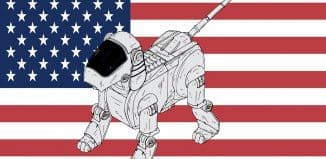How does one SPOT a terrorist?
This post is also available in:  עברית (Hebrew)
עברית (Hebrew)
A secret 92-point checklist, obtained and published Friday by The Intercept, reveals for the first time what kind of passenger behavior can merit a red flag for TSA agents responsible for pulling possible terrorists and criminals out of airport security lines.
The checklist reveals a step-by-step process for assessing whether passengers deserve additional scrutiny. Those deemed suspicious under “observation and behavior analysis” are pulled aside and searched for “unusual items” such as almanacs and prepaid calling cards. During the inspection, TSA agents are also instructed to look for “signs of deception,” which can include a fast rate of eye-blinking.
Other suspicious signs listed include exaggerated yawning, gazing down, a pale face due to a recent beard shaving, widely open staring eyes, wearing of “improper attire,” and arriving late for a flight.
The program, known as Screening of Passengers by Observation Techniques, or SPOT, has been in use nationwide since 2007 and has cost taxpayers upwards of $1 billion dollars.
According to Defense One SPOT has been dogged with accusations that it is based on pseudoscience and promotes racial and ethnic profiling among the some 3,000 TSA agents tasked with observing unusual behavior. Two years ago, a review by the Government Accountability Office found no clear evidence that the protocol used by SPOT-trained agents to detect terrorists was any better than random selection. The GAO report recommended that Congress halt funding for the program.
Register to iHLS Israel Homeland Security
Despite the scathing conclusions, however, the SPOT program has continued, and its screening checklist has been kept largely secret until now. Its backers say the program is an essential layer of TSA’s multi-pronged airport security approach and expressly forbids any kind of discriminatory profiling. In a statement, a TSA spokesman said the agency would not comment on or confirm the checklist published by The Intercept.
“Behavior-analysis techniques that have been successfully employed by law enforcement and security personnel both in the U.S. and internationally,” the spokesman said. “No single behavior alone will cause a traveler to be referred to additional screening or will result in a call to a law enforcement officer.”
The American Civil Liberties Union sued TSA last week for access to records related to the SPOT program’s efficacy, which the agency has so far refused to hand over.
The SPOT program has also attracted in recent years the scrutiny of lawmakers of both parties, skeptical of its efficacy and concerned about the high price tag. In 2013, Rep. Mark Sanford, a South Carolina Republican, extensively questioned former Transportation Security Administration chief John Pistole at a Homeland Security Subcommittee hearing about whether the SPOT program held any merit or was necessary given the other layers of airport security.
“You go through a screening system which essentially undresses somebody, you send their equipment through radar detection and other devices,” Sanford said. “The question is, from a civil-liberties standpoint, given those other tests, do you in addition have to go through a screening process based on somebody’s interpretation of what might be in your brain?”






























